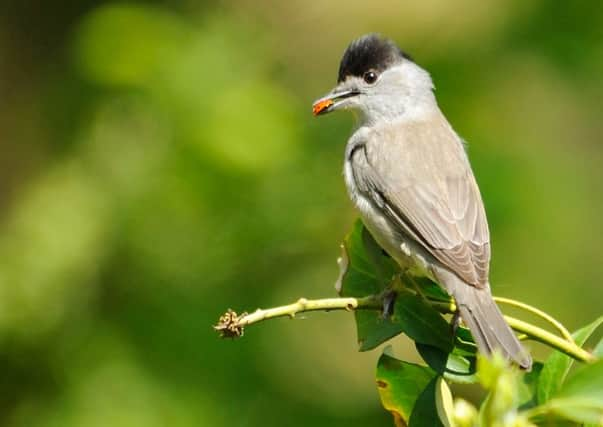Birdwatch: Icy blast spurs surge in visitors to garden feeding grounds


Among them have been siskins, lesser and one or two mealy redpolls, bramblings, yellowhammers, reed buntings, bullfinches, greenfinches, marsh and willow tits, great spotted woodpeckers and one or two ring-necked parakeets.
This increase in activity has come just in time for the RSPB’s Big Garden Birdwatch next weekend, January 30 and 31, and it will be interesting to see the results.
Advertisement
Hide AdAdvertisement
Hide AdOne bird likely to feature is the blackcap. They are still mostly a summer visitor to our woodlands but now several thousand come here for the winter from southern Germany and Austria instead of making the much longer journey south to the Mediterranean and North Africa.
Numbers are increasing as their offspring also follow this new migration route arriving here just after our breeding blackcaps have left. Three males and a female, were seen in a Sheffield garden this week.
They have a varied diet, eating fruit such as windfall apples and cotoneaster berries but also the suet, bread crusts, cheese, porridge and other scraps left on bird tables and chasing off other birds attempting to share this bounty.
By March most will have left for Europe again, arriving back at breeding sites before the blackcaps that went south and, as a result, having the pick of the best territories.
Advertisement
Hide AdAdvertisement
Hide AdThe cold weather has also boosted gull numbers with an incredible count of 23 Caspian gulls at Rufforth, near York last week, possibly the highest ever count from a single location in the UK. This gull breeds around the Black and Caspian seas but has been expanding westwards.
It used to be considered a subspecies of herring gull but now most authorities regard it as a full species in its own right.
Another Caspian gull has been coming in to roost at Angler’s Country Park near Wakefield along with a Kumlien’s gull, a subspecies of Iceland gull. Another Kumlien’s gull was seen at Hornsea Mere while Iceland and glaucous gulls have been reported across the region.
Two black redstarts were reported on the new Waverley development at Orgreave, South Yorkshire, and others in a field off Meltham Road, Honley, West Yorkshire and at North Landing, Flamborough.
Advertisement
Hide AdAdvertisement
Hide AdTwo Richard’s pipits in a field at North Landing were joined by a third while just up the coast a drake surf scoter continued to be seen off Filey Brigg. A great grey shrike was seen again in Cropton Forest.
Short-eared owls continued to be seen with one showing particularly well hunting during the day over gardens in North Bay, Scarborough.
Sightings at Hornsea Mere included a redhead smew, red-necked grebe, long-tailed duck and red-crested pochard while another drake red-crested pochard and a redhead smew were on the Fairburn Ings reserve.
Four bearded tits were seen in the reedbed at the Old Moor reserve, the first record for 37 years.